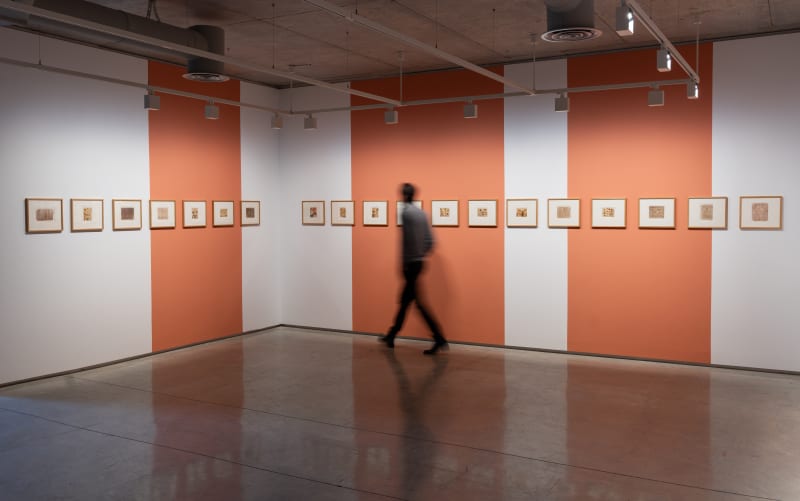“Tradition is the future of man”.
Tradition requires perpetual renewal. Its potential is inextricably tied to artistic experimentation, each breathing life into the other. To regenerate, in a post-colonial landscape, entails a deliberate shift from a passive allegiance to Western tradition. This encapsulates Farid Belkahia’s ethos — and his relentless quest for a new definition of artistic repertoire, one that seeks to emancipate the syllabus. In his work, the rehabilitation of vernacular forms of expression, rooted in the past, stretches towards the future.
As one of the founders of the Casablanca Art School, Belkahia defied entrenched pictorial traditions and established a modernist discourse and pedagogy that are emblematic of his Moroccan heritage. His approach propelled a deliberate disruption of the conventions of art production—an explicit rupture with Western referential dogmas and aesthetics. His commitment to interiority and identity prompted an exploration of materiality, namely of copper and skin. This exhibition presents a series of his 1980s drawings on paper and skin, centering around the kinetics of his geometric forms, which unfold as ideograms of the fundamental abstract dimension that his sources yield. Through a re-appropriation of traditional arts that disrupted the lineage of colonial modernist frames, his new symbolic iconography restored the sanctity of materials and the graphism used in Moroccan crafts and Islamic arts. His symbolic register is freighted with Amazigh shapes and patterns, Tifinagh signs and natural pigments inherent to his material culture, through which he navigates corporality, spirituality, and sensuality through geometric and abstract precision. Animal skin, a rather demanding material, simultaneously pays homage to parchment and traditional mediums in Islamic arts.[1]
By signifying skin as a physical surface for artmaking, Belkahia renders bodily boundaries as malleable as copper for instance—resistant, albeit far more permeable. Notwithstanding the threat of a permanent stench of putrefaction, skin, a receptacle of memory, undergoes a process of sublimation—an ennoblement, a metamorphosis that resuscitate its symbolic and aesthetic traces. As the Moroccan writer Rajae Benchemsi notes, skin “retains everything in memory … It is a mobile memory, with recollections of vigour and nature”.[2] In 1980, Belkahia began a series on paper or skin surfaces as his initial investigation of the Malhun—a form of poetic expression that eulogizes feminine attributes, in which he favoured the use of the circle.[3] According to Belkahia’s dialectic, whilst women were symbolized by circular forms, Man was represented by triangles.[4]
Elaborating on the interconnectedness of the corporeal and the metaphysical, he states that “the skin is itself a geography of the world, a microcosm”.[5] The undulant geometrization of his compositions appears in motion, almost animated, as the artist continues to dialogue with primordial and universal signs and symbols: solar forms, rectangles and squares, synchronous entanglements, intersecting arrows and floating spirals— all outlined by his pigment. The synthesis of this equation resounds with Belkahia’s perpetual exploration of profound abstract and spiritual themes of fecundity, unity and the cosmos, where he navigates between the masculine and the feminine, the esoteric and the erotic.
Racha Khemiri
Tunis. December 2024.
